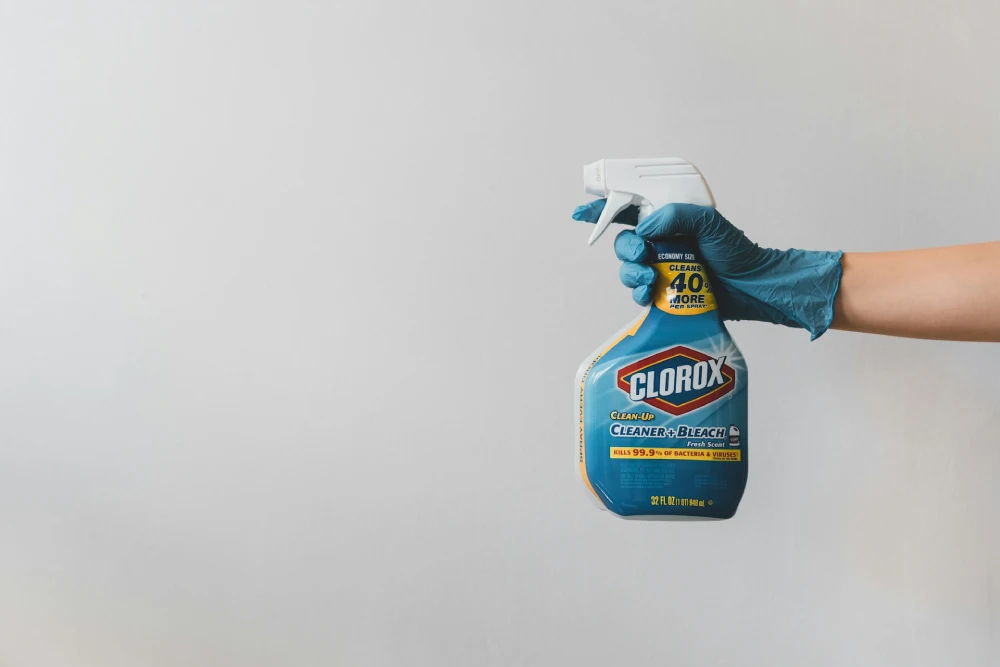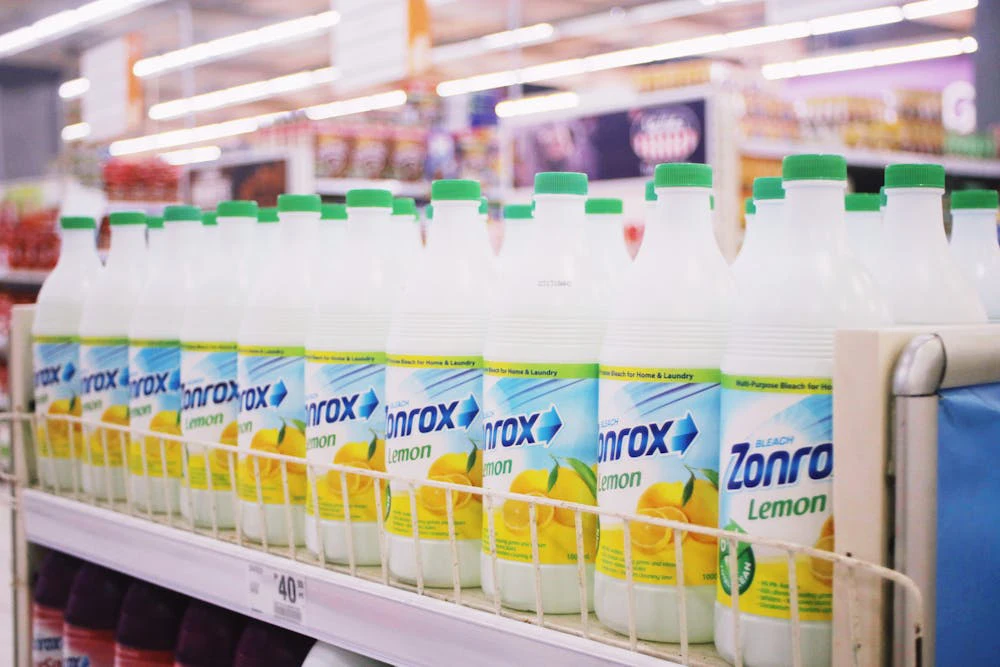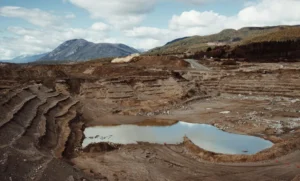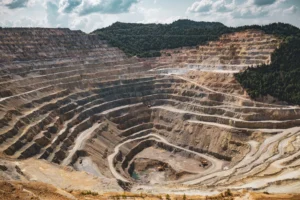Bleach is a common household item, a powerful disinfectant that keeps surfaces germ free. It is a popular cleaning product because of its capacity to kill germs and remove stains in homes.
There is a growing concern among many people about whether is bleach bad for the environment.
Bleach is a potent chemical solution. Its effectiveness as a cleaner and disinfectant is obvious. But, this ability comes with responsibilities.
Bleach, like many other chemicals, can impact both human health and the environment. Let’s explore these effects in detail and find out how is bleach bad for the environment? what risks it poses to the environment.
Is Bleach Bad for the Environment

Bleach can be harmful to the environment when used in excess. Excessive use of bleach can contaminate water and soil, and even contribute to air pollution. It poses a threat to the environment in several ways.
- Bleach often ends up in our sewers, where it isn’t treated properly and can harm the environment.
- Bleach can enter the environment through wastewater.
- Many water treatment plants are not designed to fully remove bleach.
- Individual households can also contribute to bleach pollution by improperly disposing of bleach.
Bleach is a powerful cleaning agent but can harm the environment if not used carefully. While it keeps our surfaces sparkling and effective at killing germs it can be tricky for the environment.
Bleach: A Hidden Threat

We all know the bleach routine, when we pour bleach down the sink to kill the germs or freshen up the laundry. It mixes with wastewater that travels through sewage systems.
While treatment plants work hard to clean this water before releasing it back into rivers, lakes, and oceans, but they cannot remove everything. Traces of bleach can remain, harming delicate ecosystems and the aquatic life.
What is Bleach made of
Household bleach is primarily a diluted solution of sodium hypochlorite (NaClO) in water. This chemical compound is responsible for bleach’s powerful oxidizing properties, which break down stains and kill germs.
It’s important to note that bleach can also contain small amounts of other chemicals like sodium hydroxide to stabilize the solution.
Environmental Impact of Bleach

Bleach poses a serious environmental risk. When released into water, it can transform into harmful dioxins, known to cause cancer, endangering both aquatic life and humans.
It can also pollute the soil and air and also can have hidden downsides for our health and the environment. Let’s explore these effects:
Impact on Water Systems
- Water Contamination: Improper bleach disposal allows chlorine and other chemicals to seep into water sources, such as rivers, making them unsafe for drinking and harming aquatic life.
- Disrupted Ecosystems: Bleach can alter water’s pH balance, creating an environment unfit for aquatic plants and animals.
- Byproduct Formation: During wastewater treatment, bleach can react with other substances, forming harmful byproducts like dioxins that persist in the water.
Impact on Soil
- Agricultural Impact: Bleach that gets into water sources that are used for irrigation can hurt crops, leave behind dangerous chemicals, and mess up the communities of good microbes in the soil. It’s possible that this will hurt the efficiency of farming.
Impact on Air
- Indoor Air Pollution: Bleach fumes released during indoor use can contribute to air pollution, irritating eyes and throats and potentially worsening respiratory conditions.
- VOC Emissions: Bleach releases volatile organic compounds (VOCs) that contribute to ozone depletion and overall air pollution.
- CFC Release (indirect): some bleaches release chlorofluorocarbons (CFCs) into the air, contributing to global warming.
Impact on Human Health
- Respiratory Issues: Inhaling bleach fumes can irritate the throat and lungs, causing coughing, wheezing, and breathing difficulties. People with respiratory problems are at more risk.
- Skin Irritation: Direct contact with bleach can cause redness, irritation, or even burns, especially on sensitive skin.
- Ingestion Risks: Swallowing bleach can be dangerous, leading to nausea, vomiting, and stomach pain.
Harmful Effects of Bleach
Chlorine Release: The global bleach industry releases around 2.5 million tons of chlorine into the environment annually, contributing to air and water pollution.
Aquatic Ecosystem Damage: Even small amounts of bleach can harm aquatic life. A bleach concentration of just 1 ppm can be lethal to many species.
Coral Reef Bleaching: Over 50% of the world’s coral reefs have been affected by bleaching events, and bleach pollution is a contributing factor.
Is Bleach Biodegradable?

Is Bleach Environmentally Friendly?
Bleach (Sodium hypochlorite) does not biodegrade in the way most people think. Biodegradation involves microbes like bacteria breaking down materials. Though bleach may decompose through exposure to light and other components over time, it does not do so with those microbes and thus isn’t exactly biodegradable.
Bleach is not biodegradable in the standard definition. While it breaks down over time, it doesn’t involve the action of microbes needed for true biodegradation.
Safe Bleach Use

Safety First
Be careful with bleach. When using it, you should wear gloves and goggles and make sure there is enough air flow in closed areas. Never mix bleach with other cleaners, such as ammonia or vinegar, because the fumes will be very dangerous.
Proper bleach disposal is important. Never pour it down the drain or dispose of it near water sources. Instead, dilute it significantly before discarding it in a sewage system. Check with your local waste management authority for specific disposal guidelines, some facilities offer designated bleach disposal areas.
The Bottom Line
Excess bleach can harm the environment. The bleach going down the drain is usually unserved and thus ends up in our waterways without proper treatment, which then harms the aquatic life and damages ecosystems.
Improper use and disposal release chemicals into water sources, kill wild animals, and disrupt sensitive ecosystems.
A few steps will keep you clean while maintaining precious biodiversity by reducing the harmful impact of bleach.
FAQ's
How toxic is bleach to the environment?
Bleach is highly toxic to the environment. It poses a serious threat to aquatic life and contributes to water pollution.
Is there an environmentally friendly bleach?
No, there’s no truly eco-friendly bleach. While some alternatives such as oxygen bleach are less harmful. Consider using gentler, eco-friendly alternatives.
How long does it take for bleach to biodegrade?
Bleach takes several months to years to degrade in the environment.




